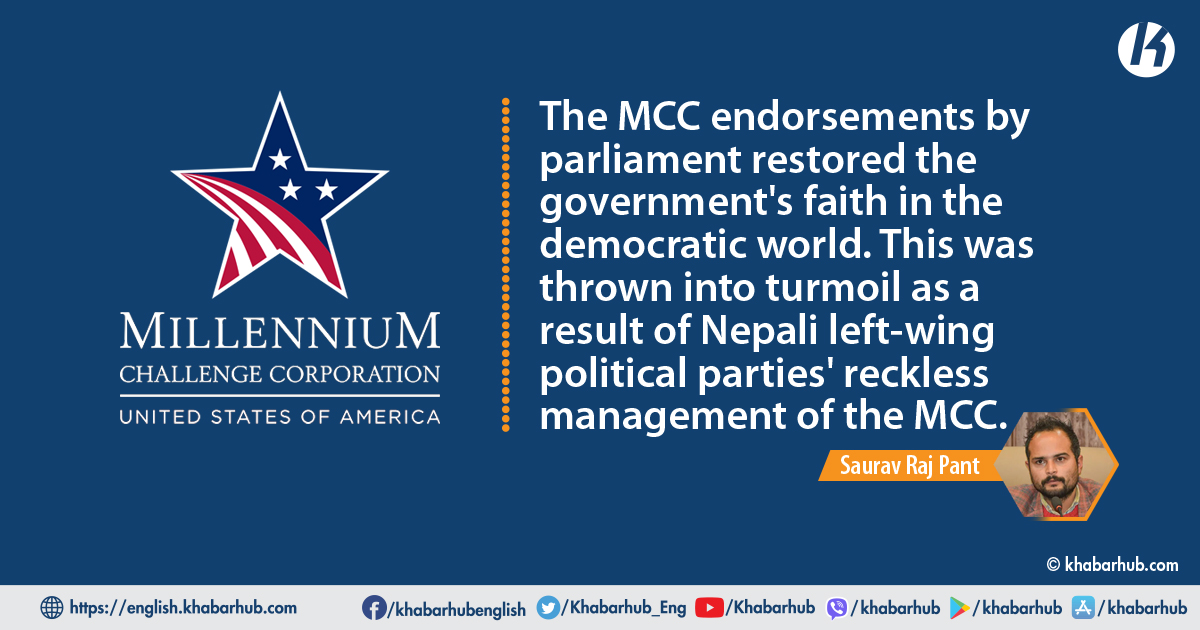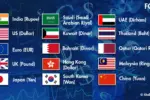‘Geopolitics’ is a popular term, especially for buffer states with low economic growth, such as Nepal (This is not exactly suitable for a country like Switzerland).
In Nepal, the existing geopolitical narratives usually cause dementia. ‘One day, Nepal will be a part of either India or China,’ for example.
Second, such tales are triggered more frequently by global occurrences. The Russian invasion of Ukraine is an excellent illustration. In this battle, Ukraine, which is the most vulnerable in terms of military might when compared to Russia, has been hit hard.
Similarly, Nepal is militarily vulnerable since it is sandwiched between India and China. China was the only country to endorse Russia’s actions in Ukraine, while India kept mute.
Both countries have their constraints and strategies for resolving the continuing Russia-Ukraine conflict.
Despite China and India’s absence at the UN, Nepal and its neighbors (Bhutan, Maldives, and Afghanistan) ventured to act in favor of the Ukraine Resolution, demonstrating how small-power states may indirectly demonstrate against big-power attitudes among their neighbors.
Morality, objectivity, subjectivity, and legitimacy of any action caused by the US-centric world or China-centric/ally world split Nepali intellectual circles. Left or democratic divergence has always been the case.
Either supporting a democratically oriented globe (the United States) or a left-leaning world (the rest of the world) ( China). In Nepali society, the values and benefits established by these two systems have been enormous. Mr. Wang Yi, the Chinese Foreign Minister, just returned from a trip to Nepal, highlighting the present situation.
Nepal may still borrow money, but it needs to invest prudently. As we live in a post-pandemic environment, which has been exacerbated by the Russia-Ukraine conflict, taking out loans without adequate investment return guarantees may put us in jeopardy.
The 9 agreements and documents were agreed upon by both parties. Although Nepal and China reached an agreement on the Technical Assistance Scheme for China Aid Feasibility Study of the China-Nepal Cross-Border Railway Project, it barely mentions the Belt and Road Initiative (BRI).
The Nepalese government has kept silent on the BRI problems this time. However, KP Sharma Oli, the leader of the CPN(UML), highlighted the matter of the BRI with Foreign Minister Wang Yi, emphasizing the need for its implementation as soon as feasible.
With Foreign Minister Wang Yi, Maoist leader Prachanda also had emphasized the need for BRI execution. However, the Nepali Congress (NC) and its government leader had placed a limited emphasis on the BRI.
From the outset, the Nepali Finance Ministry, as well as NC, were concerned about the BRI’s investment approach.
The government and the NC intend to develop an investment strategy based on grants. However, reading between the lines, China appears to want to achieve it through loans.
According to Aid Data, Chinese investment has mostly relied on loans rather than grants since the BRI’s inception in 2013, with a 31 to 1 ratio.
MCC, China, US & Development
China’s covert or overt involvement in MCC issues in Nepal has positioned China in a spot where she is unable to campaign for loan-initiated projects in Nepal.
Nepal already has a $500 million MCC project and a $659 million USAID contract (under negotiation), both of which are grant-based projects.
Nepal is not required to repay for this. Second, the narratives are based on the Sri Lankan crisis, which has prompted the Nepali government and public concern as a result of perceived Chinese debt-trap diplomacy.
In Nepal’s development sector, there has been a growing gap. In practice, the ongoing conflict between ‘Development Idealism’ and ‘Development Populism’ has left Nepal disillusioned.
Development Idealism is often associated with a protectionism-like mentality of shunning foreign investment and attempting to derail the economic environment’s competitiveness.
During the License Raj, India was particularly vulnerable to protectionism until 1990. Man Mohan Singh, the then-Finance Minister, had it canceled.
When it comes to Nepal, follows a mixed economic model with the private sector playing an increasingly important role. The business climate, on the other hand, is not encouraging.
Pathao is the most recent example. Pathao is a ride-hailing service. Pathao is a Bangladeshi investment in Nepal. Pathao has revolutionized Nepalese public transportation by making it more competitive and cost-effective, forcing taxi companies in Kathmandu to reconsider their business models.
As a result, Pathao became a victim of numerous forms of hooliganism. While government organizes regular meetings and seminars to promote foreign investment in Nepal whereas some sections of the society want to boycott it because of fear of job loss from foreign companies.
Second, politicians provide populist pro-development speeches. Without any real plans, such populist notions include, but are not limited to, riding a ship on the water or installing a gas pipe connection in every home.
Even none of the Democratic-leaning political pundits were interested enough in BRI until and unless the MCC project was troublesome. In final words, if MCC wasn’t made ‘playing field’ by the Chinese—Nepali public would have easily accepted the BRI under the loan scheme.
This populist development vision is simple to persuade young people to vote for. In the global political environment, this sort of condition has been seen.
Nepal’s debt has virtually quadrupled in the previous five and a half years, according to the country’s economic situation.
Nepal’s outstanding debt was 40.16 percent of GDP in 2019-2020, according to the Financial Comptroller General Office.
Nepal may still borrow money, but it needs to invest prudently. As we live in a post-pandemic environment, which has been exacerbated by the Russia-Ukraine conflict, taking out loans without adequate investment return guarantees may put us in jeopardy.
The MCC endorsements by parliament restored the government’s faith in the democratic world. This was thrown into turmoil as a result of Nepali left-wing political parties’ reckless management of the MCC.
Although MCC was established during the Maoist regime of Babu Ram Bhattarai, several Maoist and left-leaning leaders have since objected, putting the Nepal-US bilateral relationship in peril.
Way Forward
Speaking very geopolitically, the Chinese bandwagon attempt to de-limiting the MCC project in Nepal through the unification of the left political parties of Nepal—-has made her boomerang.
This has even made her obligatory further to de-classify the BRI agreement documents and to provide grant-based BRI projects rather than loans.
Even none of the Democratic-leaning political pundits were interested enough in BRI until and unless the MCC project was troublesome. In final words, if MCC wasn’t made ‘playing field’ by the Chinese—Nepali public would have easily accepted the BRI under the loan scheme.









Comment